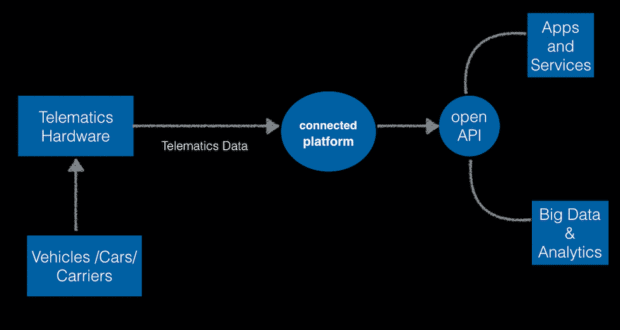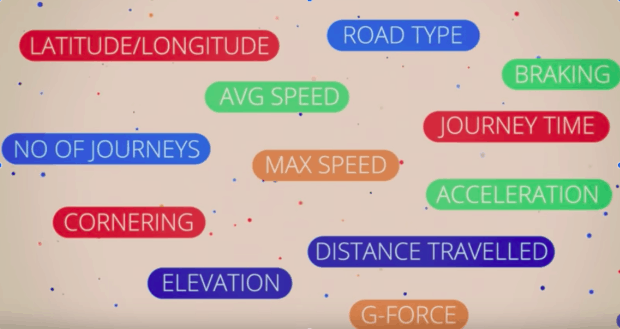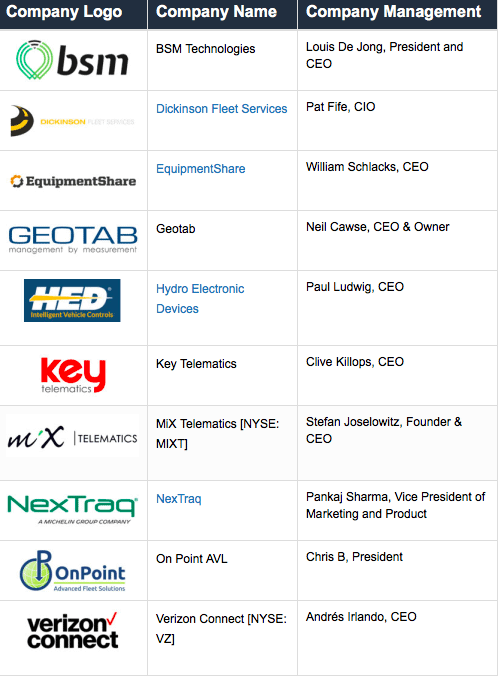Vehicle-to-Cloud – yes, it is a thing! And it is making automotive insurance providers and telecoms thrive together to support telematics
“Self-driving cars are the natural extension of active safety and obviously something we should do,” this is a popular quote by Elon Musk. But wait, even more popularly discussed are the data privacy challenges which come with connected cars. The solution to these challenges rest in the world of Telematics, a method of monitoring an asset (car, truck, heavy equipment, or even ship) by using GPS and onboard diagnostics to record movements on a computerized map.
Telematics might be a decade old phenomenon, but what is relatively new to telematics, and innovating at a high speed, is the effort to connect telematics to the internet of things (IOT); and find out how telematics solution providers can benefit from cloud-based management services. The critical question is how the data generated within a vehicle will effectively interact with data of the outside world through connected devices. We all are waiting for an era where vehicles will not only drive themselves but also talk intelligently to us. This makes the role of telematics service providers important who offer services to vehicle drivers for either a subscription fee or any other arrangement. These can be emergency services or information services to improve the driving experience.
To keep up with the recent government regulations across the globe and cope with climate change, fleet operators are strongly emphasising energy saving and vehicle safety measures. At the same time, they want to ensure business models which can reduce Total Cost of Operations (TCO), which encompasses acquisition cost, operational cost and depreciation. This is where connectivity-as-a-service can help telematic service providers.
Here is how it works: Data is gathered from vehicles and transmitted to a cloud-based platform and then used for various services depending on the functionality of the app- location, fuel consumption or speed. Apps interact with telematics systems to see how fleet companies are operating. (see chart below)

The numbers speak of the potential of this growing industry for automotive, cloud-based solutions and telecommunications, among other third-party providers. According to Global Telematics Market Report released by Netscribes, the global telematics market is expected to grow at a compound annual growth rate (CAGR) of 28.5% between 2017 and 2022 to reach a global revenue of USD 233.24 billion by 2022. Here are a few areas where connectivity-as-a-service can help telematic service providers.
Compliance with Government regulations
Governments in several countries have made it mandatory to have an electronic onboard recorder (EOBR) fitted commercial vehicle, which is one of the key drivers of the adoption of telematics among fleet companies. Today, North America is the highest revenue-generating region for the automotive telematics industry. The telematics market is at a mature stage in countries like the US and Canada, where stable growth is forecasted until 2022. The ELD mandate, passed this year, limits how much truck drivers can drive and when; for example, they cannot drive for more than 11 hours during a 14-hour period. These rules have required telematics service providers to keep a track record of necessary data to ensure driver safety and compliance.
Documentation of real-time data by fleet operators
The primary role of telematics service providers is to measure driving data to offer services like driver behaviour analysis, safety training integration, predictive analysis and connected vehicle frameworks. To provide any of these solutions, one needs to accurately collect real-time data generated by vehicles from various devices and then transform it into a structured form to make accurate business decisions. For instance, helping an insurance company know the driver performance data to offer better products. With the documentation of real-time data, solution providers can access cloud-based management systems through mobile or desktop.

Security and safely in vehicles
Statista predicts that by 2020, connected cars will make up 98% of the new car market worldwide. With this innovation also comes challenges regarding security. Sample this: In 2016, a team from security research firm Keen Labs successfully demonstrated how to hack Tesla’s Model-S. They tricked drivers into accessing a fake website through a malicious Wifi hotspot, which then downloaded the researchers’ software. This software enabled them to gain control of the car’s features. The solution to protect connected cars also lies in connectivity-as-a service, which will enable transparency and decentralisation of data.
Customisation for various business models through collaboration
Cloud platforms allow drivers, carriers, shippers, fleet operators, dealers, service stations, insurance companies and other authorities to be connected in real-time with each other. The likes of Google and Alexa can get information on the local road safety and what steps to advise next in terms of recommendations to users. Through connected platforms, service providers can give personalised advice gathered on the basis of contextual data such as geolocation, traffic zone etc. It is as simple as Alexa helping a user to make the next decision with the help of a connected device through different apps. What route to follow? Which restaurant to visit? What speed to maintain?
Conclusion
It is clear that the IOT is revolutionising fleet management. The newest generation of Fleet Management Solutions have migrated to the IOT. The clear benefits of an effective vehicle-to-cloud platform are increased driver safety, reduced TCO and predictive analysis for the future.
To deliver optimum results to telematics solution providers and fleet operators, there is a need for reliable connectivity across coverage areas, and compatibility with networks– which a reliable connected platform can provide.
We are leaving you with a list of ten telematics service providers:






